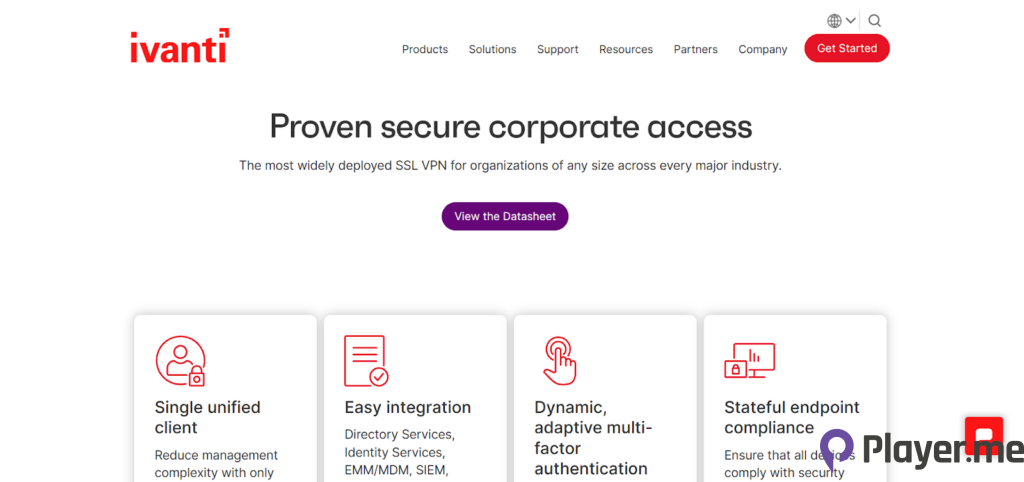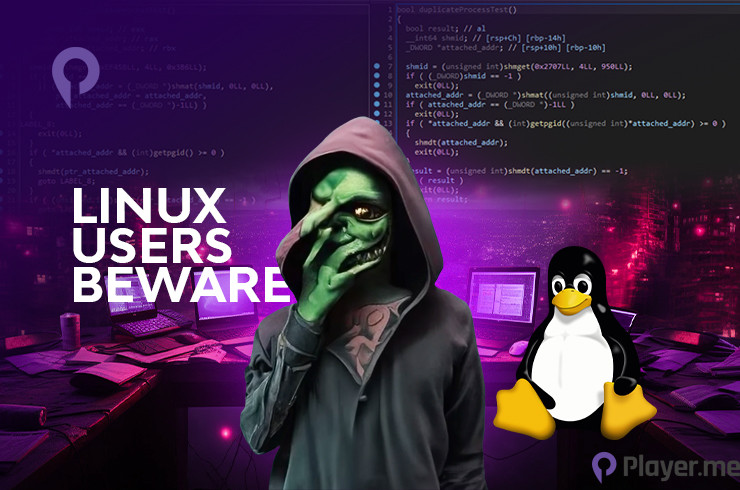Linux users face a new adversary: Magnet Goblin. This sophisticated threat actor has been leveraging advanced tactics that are similar to Morris II AI Worm, including the deployment of Linux malware and exploitation of 1-day vulnerabilities, to target unsuspecting users. How serious is the situation? Well, keep reading to be informed about the severity of the situation, and the ways to protect your precious data.
What Is Magnet Goblin?
Magnet Goblin has been exploiting 1-day vulnerabilities in public-facing services as an initial infection vector. Leveraging exploits like the Ivanti Connect Secure RCE bug (CVE-2024-21887), they target systems lacking patches, with the CVE showing a severity score of 9.8/10. By utilising these vulnerabilities with similar cases like Data Poisoning, Magnet Goblin rapidly infiltrates networks, dropping custom Linux backdoors for their financial gain.

Operating within a custom malware family known as Nerbian, Magnet Goblin deploys various tools, including the cross-platform Remote Access Trojan (RAT) NerbianRAT and its smaller counterpart, MiniNerbian. These malware variants enable Magnet Goblin to establish persistent access to compromised systems, facilitating their malicious activities across Windows and Linux environments.
Magnet Goblin’s Linux Malware Threat: NerbianRAT and MiniNerbian
NerbianRAT and MiniNerbian are two dangerous pieces of malware wielded by the hacker group Magnet Goblin to exploit vulnerabilities in Linux systems that could lead to massive data breaches.
NerbianRAT, a remote access Trojan (RAT) tailored for Linux, has been circulating for over two years, providing attackers unauthorised access to compromised systems. This cross-platform RAT variant allows hackers to execute commands remotely, pilfer sensitive data, and maintain control over infected systems.
MiniNerbian, a streamlined version of NerbianRAT, shares similar functionalities but focuses on specific tasks, particularly command and control operations, making it a potent tool in Magnet Goblin’s arsenal. Additionally, MiniNerbian is utilised to backdoor servers running Magento, serving as command and control hubs for devices infected by NerbianRAT.
Also Read: Digital Markets Act 101: What You Need to Know Right Now
Exploiting 1-Day Vulnerabilities
A “1-day exploit” happens when cybercriminals take advantage of vulnerabilities in software that have just been fixed by the software company. Cybercriminals can study this information and create attacks that target computers that haven’t been updated yet. This is why it’s called a “1-day exploit” — because it happens after the fix is available and it can lead to severe consequences such as selling your personal data in ransomware like what happened in Epic Games’ ransomware assault.
It’s really important to update your computer with these fixes as soon as possible. Even though the fixes are meant to help, they can also give cyberattackers ideas if they’re not applied quickly. So, keeping your computer up to date is a big part of staying safe online so be sure to read up Cybersecurity: Fortifying Systems and Shielding Valuable Data.
What Is CVE-2024-21887 and How Did It Lead to the Exploitation?
CVE-2024-21887 is a specific problem found in Ivanti Connect Secure and Ivanti Policy Secure. It’s called a command injection vulnerability. This means that if a hacker can trick the system into accepting certain types of commands, they can control the system.

Here’s how it works:
- First, the hacker needs to have special access to the Ivanti system.
- Then, they send special requests to the system, trying to trick it into accepting harmful commands.
- When succeed, they can basically do whatever they want on the system, like stealing data or causing damage.
This vulnerability was used to remotely control systems. This kind of attack is serious because it allows hackers to take over systems from far away without anyone noticing. It’s like giving them the keys to the entire system, which can lead to all sorts of problems like stealing information or causing chaos such as the Medibank incident.
The Rise of Linux Malware
Malware targeting Linux systems has seen a notable uptick, with Crowdstrike reporting a 35% increase in Linux-targeted malware in 2021 compared to the previous year. This surge may be attributed to the growing prevalence of organisations transitioning to cloud-based environments, where Linux often serves as a fundamental component.
Another concerning trend is the rise in ransomware attacks targeting Linux environments, with notorious groups like Conti, DarkSide, REvil, and Hive expanding their scope to include Linux host images utilised in virtualised environments. These developments underscore the imperative for heightened vigilance and enhanced security measures within Linux systems. It is crucial to recognise that the security of an operating system is contingent on addressing vulnerabilities across all facets of its infrastructure.
Related: AI and Cybersecurity: Protecting Data in the Age of Intelligent Threats
6 Ways to Protect Against Magnet Goblin’s Tactics
Defending against the tactics employed by the Magnet Goblin group necessitates a comprehensive approach encompassing several key strategies.

1. Prompt Patching
A primary defence against Magnet Goblin’s infiltration is prompt patching to address 1-day vulnerabilities. These vulnerabilities, disclosed but not yet patched, are prime targets for exploitation. Timely application of patches upon release is essential to mitigate these risks effectively.
2. Advanced Threat Detection
Implementing advanced threat detection mechanisms, including Intrusion Detection Systems (IDS), Intrusion Prevention Systems (IPS), and advanced antivirus solutions, is crucial. These tools aid in identifying and neutralising threats before they escalate into significant breaches.
3. Cybersecurity Awareness Training:
Equipping all users with up-to-date knowledge of emerging threats and mitigation techniques is critical to prevent their data from breaching and the repeat of Microsoft’s accidental 38TB data breach. Training initiatives should cover topics such as recognising phishing attempts, avoiding suspicious downloads, and maintaining robust password practices.
4. Regular System Audits
Regular auditing of systems helps uncover potential weaknesses or breaches promptly. Monitoring for unusual system behaviour, such as sudden spikes in network activity or unexpected system reboots, enables swift response to potential threats.
5. Firewalls and Network Segmentation
Utilising firewalls to block unauthorised access and implementing network segmentation to contain attacks are essential measures. Firewalls act as barriers against unauthorised entry, while network segmentation limits the spread of attacks within the network. Hence, it is featured in our Top 5 Cybersecurity Solutions Today.
6. Backup and Recovery Planning
Developing and maintaining robust backup and recovery plans are critical components of defence. Regularly backing up essential data and ensuring swift restoration capabilities minimise the impact of attacks and aid in swift recovery.
It’s important to recognise that no single strategy can provide absolute protection against cyber threats. Adopting a multi-layered approach that integrates these strategies will establish a resilient defence against the tactics employed by groups like Magnet Goblin.
Read More: Privacy and Data Protection: Preserving Confidentiality in a Digital World
Author Profile
Latest entries
 GAMING2024.06.12Top 4 Female Tekken 8 Fighters to Obliterate Your Opponents in Style!
GAMING2024.06.12Top 4 Female Tekken 8 Fighters to Obliterate Your Opponents in Style! NEWS2024.03.18Elon Musk’s SpaceX Ventures into National Security to Empower Spy Satellite Network for U.S.
NEWS2024.03.18Elon Musk’s SpaceX Ventures into National Security to Empower Spy Satellite Network for U.S. GAMING2024.03.17PS Plus: 7 New Games for March and Beyond
GAMING2024.03.17PS Plus: 7 New Games for March and Beyond GAMING2024.03.17Last Epoch Necromancer Builds: All You Need To Know About It
GAMING2024.03.17Last Epoch Necromancer Builds: All You Need To Know About It





